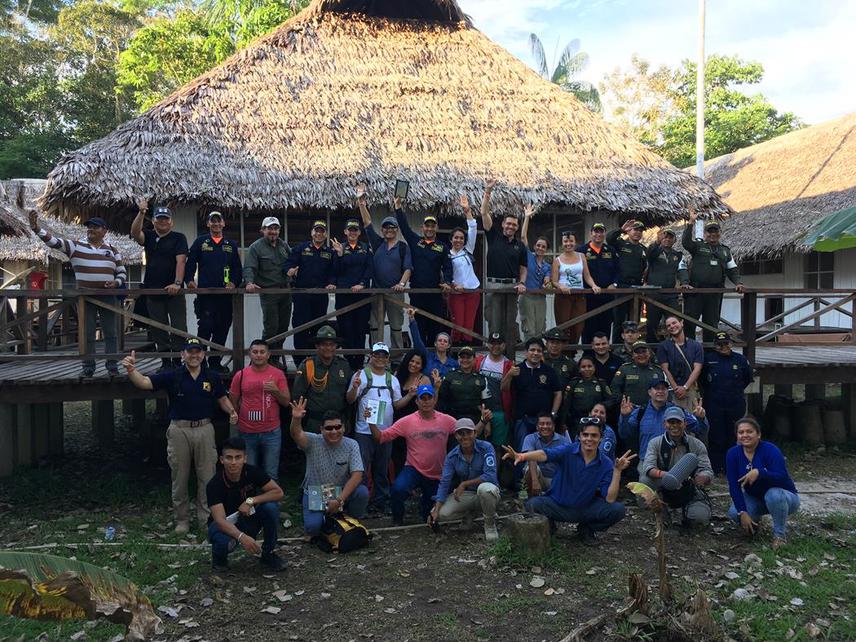Article featuring the project on National Geographic
Angela Maria Maldonado Rodriguez
Other projects
21 Jan 2004
The Woolly Monkey Project: Status and Conservation of Primates in Amacayacu National Park (Amazonas Department, Colombia) - A Community-Based Project
15 Jan 2010
Locally Based Monitoring of Wildlife Utilisation at the Colombian-Peruvian Border: Enforcing International Wildlife Trade Regulations
26 Apr 2012
Enhancing Environmental Law Enforcement and Conservation Awareness at the Colombian-Peruvian Border using the Night Monkeys as Flagship Species
20 Feb 2015
The Aotus Project: Enhancing Environmental Law Enforcement and Conservation Awareness at the Colombian-Peruvian Border Using the Night Monkeys as Flagship Species
The Upper Amazon’s floodplain, among the world’s most diverse ecosystems, is currently characterised by interacting, accelerating vicious circles that are increasingly impoverishing both humans and the natural world. This apparent paradox results from a long history of natural resource extraction driven by global demand with negligible returns for the regional economy. This project proposes small, but strategic, replicable, and systemic changes in which improving individual and collective well-being contributes to fair, sustainable, and democratic use of common pool resources. This in turn will be reflected in the improved protection of target game species and ecosystems.
Aotus nancymaae was recently confirmed in Colombia. Its IUCN category was upgraded from Least Concern (LC) to Vulnerable (VU) (www.iucnredlist.org/details/41540/0). With this project we aim at improving collaboration between Colombia and Peru in order to conserve this unique species from local extirpation, while improving living standards through wildlife tourism.

Following our long-term conservation strategy in the area, we aim at replicating and scaling up the results obtained in Colombia in two Peruvian communities achieving the following goals:
• Build capacity in the indigenous communities of Vista Alegre and Chineria through workshops that provide training in aspects of wildlife tourism such as primate, bird and dolphin watching techniques, recording wildlife hotspots, meal preparation, and First Aid in order to establish a low-impact, Wildlife Watching Tourism (WWT) initiative as a sustainable economic alternative to decrease the extraction of natural resources while improving local living standards.
• Strengthen leadership skills in Vista Alegre and Chineria in ethical WWT practices, providing them with the theoretical and practical information to effectively design, implement, and evaluate the impact of their tourism activities. Training in customer service for community tourism and reserve management improves the long-term development, monitoring and administration of projects and funds at a local level, improving local capacities.
• Establish a tourism association comprised of 30 community members that is responsible for allocating funds properly for monitoring, construction and services that will benefit the whole community and local ecosystem.
• Foster Relationships, communication and collaboration among the communities and local organizations involved in WWT on the Colombian- Peruvian Amazonian border.
• The analyses of DNA samples from Aotus nancymaae taken from sampling sites in Peru and the Centre of Primate Reproduction IVITA-San Marcos University, Iquitos are compared with samples taken in Colombia to assist in determining the origin of A. nancymaae in Colombia, clarifying the current taxonomic uncertainty. This information will help track illegal trade occurring between the two countries.
• Improved law enforcement; grassroots monitoring of the illegal trade in wildlife serves as a case study to enforce CITES regulations at the Colombian-Peruvian border.